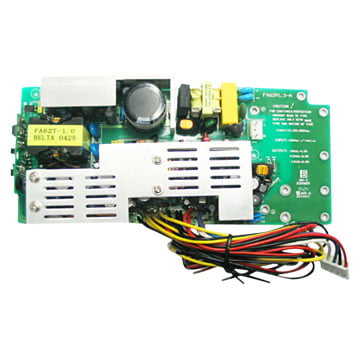Power Supply Specification
The idea for this post came from a discussion in IEEE Collabratec on how to design a Power Supply. The question of how to design a Power Supply seems innocuous enough until you really start to think back on past Power Supply designs. I was originally concerned that this was a student wanting someone else to do their coursework assignment for them but the discussion progressed into something quite useful. Here is what I posted after getting the following specification:
- Output Voltage: -300VDC
- Output current: 0.5-20mA
- Tolerance: 30Volts
- Input Voltage: 220-240 AC
Analysing Requirements
Hi …
is this project part of your course work?
The reason for this question is that the intent of coursework is to help you come to grips with what you are being taught and learn it from a practical perspective as well. Among other things, this helps a lot with retention.
I run a company that designs products for other people. I only employ graduate engineers who have demonstrated the capacity (though their academic results) and inclination (through their having done their own projects and learned how to use the teaching they have received) to do engineering and to be capable of quickly learning all the things they can’t teach in a course.
So if it is coursework, what subject is it part of?
Because if they want you to design a switching mode power supply, that is very different to an AC rectified transformer design.
You also need to be careful with a design assignment like this (coursework or a product that will be manufactured) because it is capable of killing you if you don’t use good safety practices.
I’ll assume your tolerance figure is +/-30V = +/-10% of -300VDC. So the voltage at its maximum excursion from 0V could be -330. And the maximum current is 20mA. This is 6.6W of power so it will get hot. And again, there is enough voltage to kill you.
If it is for a commercial product, then there are usually other constraints. Here are some of the questions I would be asking:
- The input voltage range is specified as 220VAC to 240VAC but it is normal to allow for short term transients. So does the output voltage have to be clamped during mains transients?
- Is soft start required?
- How quickly must it respond to load transients?
- What is the load and how much does it vary?
- Does the input stage need to be designed so that it keeps harmonics and power factor under control (this is a legal requirement for some product types)?
- Is there a maximum size?
- What is the design life and/or MTBF (Mean Time Between Failure)?
- Is fan forced convection allowed, and if so, is that even a good idea because of the MTBF or because it goes inside a sealed cabinet)?
- What is the maximum temperature rise allowed on any of the outside surfaces?
- What type of connections for the input and output voltages?
- What has to happen if the output goes short circuit or open circuit (you had a minimum current of 0.5mA so is there a minimum external load and what is allowed to happen if that isn’t there)?
- What is the environmental specification (0->70C, -20->85C, -40->85C etc)?
- Is there a manufactured cost target?
- Do you have to simulate it only, or are you building one and proving the performance?
- Are there any special safety or EMC compliance requirements for this application?
And there are lots of other questions like this for a real product design.
So regardless of the reason for the design, understanding the intent of the exercise is important to delivering a satisfactory outcome. This is one of the reasons engineering is not easy. We create the future. Others say that as well. But we also create the infrastructure and products that make a more advance future possible. And there are always lots of constraints.
I hope that has maybe encouraged you to think a bit deeper about the question. It is unlikely you will solve a problem you don’t fully understand. And an answer you don’t work through for yourself will probably not expand your understanding.
Successful Endeavours specialise in Electronics Design and Embedded Software Development, focusing on products that are intended to be Made In Australia. Ray Keefe has developed market leading electronics products in Australia for more than 30 years. This post is Copyright © 2017 Successful Endeavours Pty Ltd.




